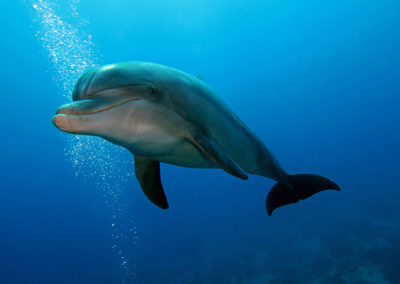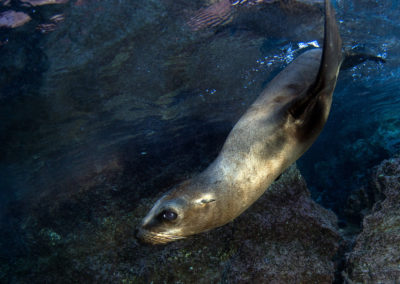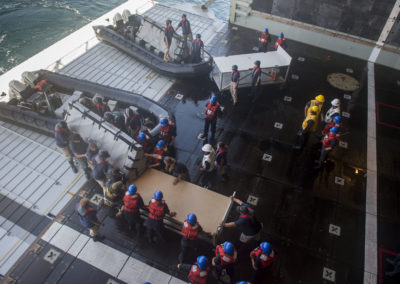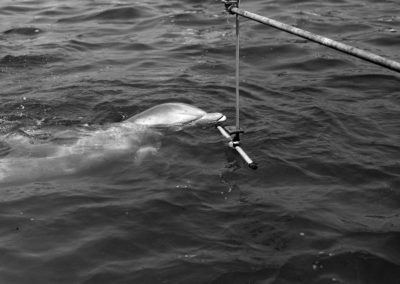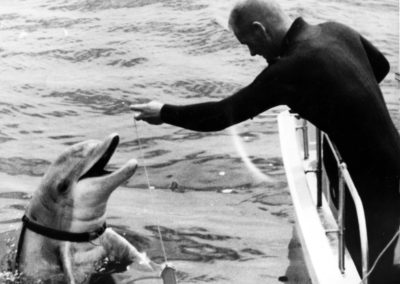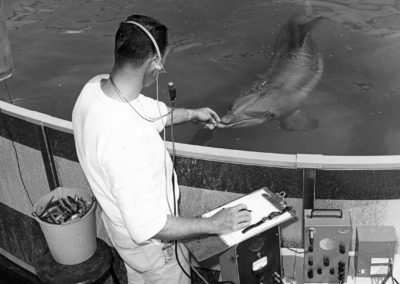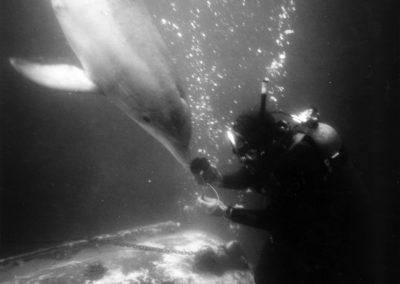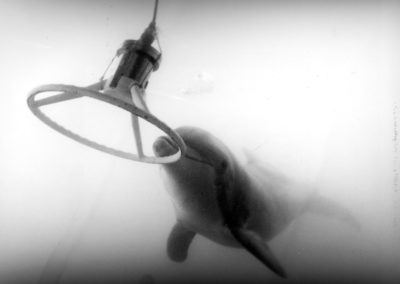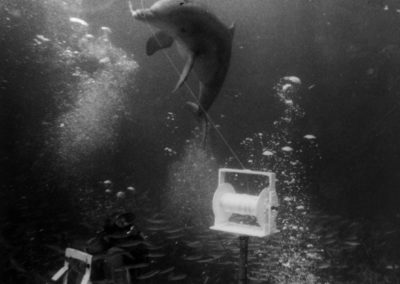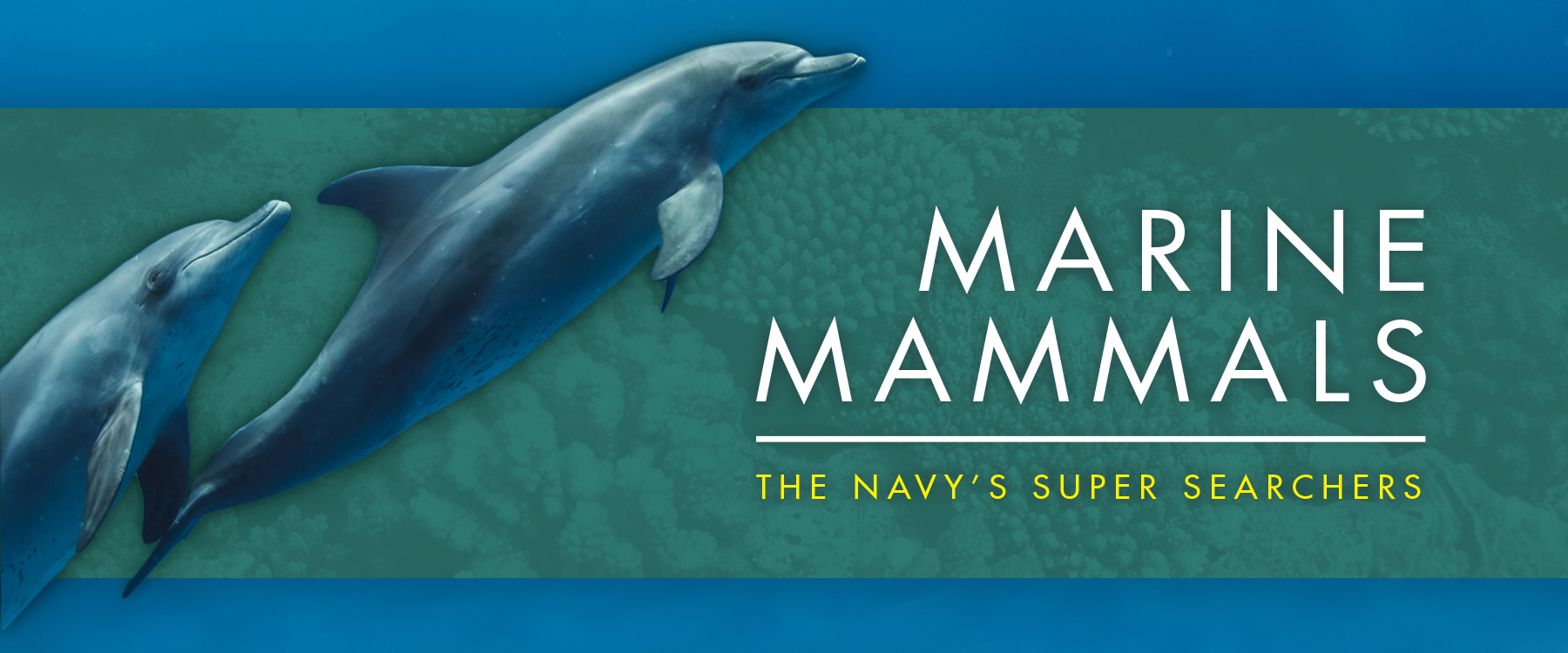
MARINE MAMMALS: THE NAVY’S SUPER SEARCHERS
When the U.S. Navy needs to locate an object underwater, it calls on unusual allies: the dolphins and sea lions of the Navy Marine Mammal Program. Navy dolphins and sea lions can find undersea objects faster and better than human divers and undersea vehicles. They carry out missions that protect and support Navy Sailors, ships, and bases.
 What are marine mammals?
What are marine mammals?
Marine mammals live some or all of their lives in the ocean. Like all mammals, they breathe air through lungs, are warm-blooded, have hair or fur, give birth to live young, and nurse babies with milk. Dolphins, whales, sea lions, seals, walruses, and manatees are examples of marine mammals.
Marine Mammals Join the Navy
The U.S. Navy created the Marine Mammal Program in 1963 to see if animals could perform tasks difficult or dangerous for human divers. Scientists assessed more than 20 species of dolphins, whales, sea lions, seals, sharks, and marine birds to determine their aptitude for Navy missions. Atlantic bottlenose dolphins and California sea lions displayed the best mix of skills and trainability.
Both species excelled at locating objects underwater. The Navy put their detection skills to use in three types of missions. Since the 1960s, marine mammals have performed these missions with more accuracy, greater speed and safety, and lower costs than human divers or undersea vehicles.
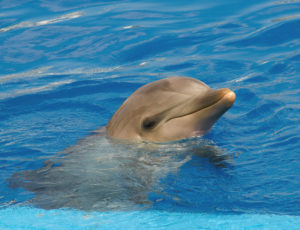 Atlantic Bottlenose Dolphins
Atlantic Bottlenose Dolphins
- Special skills: Biological sonar (echolocation), sensitive directional hearing
- Typical dive: 300-350 feet deep, maximum depth: 1,800+ feet
- Size: 300–600 pounds, 6–10 feet long
- Lifespan: 18–22 years in the wild, 40–50 years in human care
Dolphins vocalize with with clicks, whistles, yaps, barks, mews, and yelps. Press play to hear dolphins vocalizing.
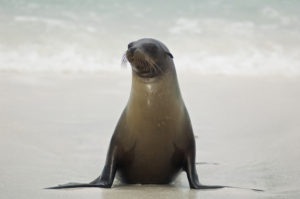 California Sea Lions
California Sea Lions
- Special skills: Sensitive directional hearing, low-light vision
- Typical dive: 200–500 feet deep, maximum depth: 1,100 feet
- Size (males): 600–800 pounds, 6.5–8 feet
- Size (females): 200–400 pounds, 5–6.5 feet
- Lifespan: 6–12 years in the wild, 20–30 years in human care
Sea lions vocalize with barks, clicks, moans, chirps, growls, and squeaks. Press play to hear sea lions vocalizing.
Tuffy the Dolphin
Tuffy was one of the Navy’s first dolphins. The scrappy, spirited animal survived a tough early life that left him scarred by a shark bite.
Tuffy impressed and exasperated his trainers with his intelligence and strong-willed behavior. His achievements were as memorable as his personality. He became the program’s star pupil in the 1960s, proving dolphins could learn complicated tasks.
In 1964, Tuffy starred in the documentary “The Dolphins That Joined the Navy.” The following year, he participated in the Sealab II project, an experiment where divers lived underwater. Tuffy carried messages and tools to the undersea habitat and practiced rescuing lost or injured divers.
Tuffy taught his trainers much about dolphin training and behavior.

